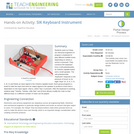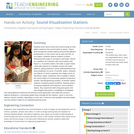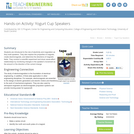
Let’s consider some common mistakes you should avoid as a presenter.
- Subject:
- Business and Communication
- Communication
- Material Type:
- Lesson
- Date Added:
- 03/06/2023

Let’s consider some common mistakes you should avoid as a presenter.

First impression matters! Learn 3 quick and easy ways to create attractive and professional-looking PowerPoint title slide. These PowerPoint templates are open educational resource, created for educators, researchers and students. These templates accompanied an online workshop (see the embedded video) to learn how to make your slides look professionals.

Drama combines the literary arts of storytelling and poetry with the world of live performance. As a form of ritual as well as entertainment, drama has served to unite communities and challenge social norms, to vitalize and disturb its audiences. In order to understand this rich art form more fully, we will study and discuss a sampling of plays that exemplify different kinds of dramatic structure; class members will also participate in, attend, and review dramatic performances.

Students work as if they are electrical engineers to program a keyboard to play different audible tones depending on where a sensor is pressed. They construct the keyboard from a soft potentiometer, an Arduino capable board, and a small speaker. The soft potentiometer “keyboard” responds to the pressure of touch on its eight “keys” (C, D, E, F, G, A, B, C) and feeds an input signal to the Arduino-capable board. Each group programs a board to take the input and send an output signal to the speaker to produce a tone that is dependent on the input signal—that is, which “key” is pressed. After the keyboard is working, students play "Twinkle, Twinkle, Little Star" and (if time allows) modify the code so that different keys or a different number of notes can be played.

Students learn about sound and sound energy as they gather evidence that sound travels in waves. Teams work through five activity stations that provide different perspectives on how sound can be seen and felt. At one station, students observe oobleck (a shear-thickening fluid made of cornstarch and water) “dance” on a speaker as it interacts with sound waves (see Figure 1). At another station, the water or grain inside a petri dish placed on a speaker moves and make patterns, giving students a visual understanding of the wave properties of sound. At another station, students use objects of various materials and shapes (such as Styrofoam, paper, cardboard, foil) to amplify or distort the sound output of a homemade speaker (made from another TeachEngineering activity). At another station, students complete practice problems, drawing waves of varying amplitude and frequency. And at another station, they experiment with string (and guitar wire and stringed instruments, if available) to investigate how string tightness influences the plucked sound generated, and relate this sound to high/low frequency. A worksheet guides them through the five stations. Some or all of the stations may be included, depending on class size, resources and available instructors/aides, and this activity is ideal for an engineering family event.

Unlike film, theater in America does not have a ratings board that censors content. So plays have had more freedom to explore and to transgress normative culture. Yet censorship of the theater has been part of American culture from the beginning, and continues today. How and why does this happen, and who decides whether a play is too dangerous to see or to teach? Are plays dangerous? Sinful? Even demonic? In our seminar, we will study plays that have been censored, either legally or extra-legally (i.e. refused production, closed down during production, denied funding, or taken off school reading lists). We'll look at laws, both national and local, relating to the "obscene", as well as unofficial practices, and think about the way censorship operates in American life now. And of course we will study the offending texts, themselves, to find what is really dangerous about them, for ourselves.

Students are introduced to the role of electricity and magnetism as they build speakers. They also explore the properties of magnets, create electromagnets, and determine the directions of magnetic fields. They conduct a scientific experiment and show cause-effect relationships by monitoring changes in the speaker's movement as the amount or the direction of the current change.